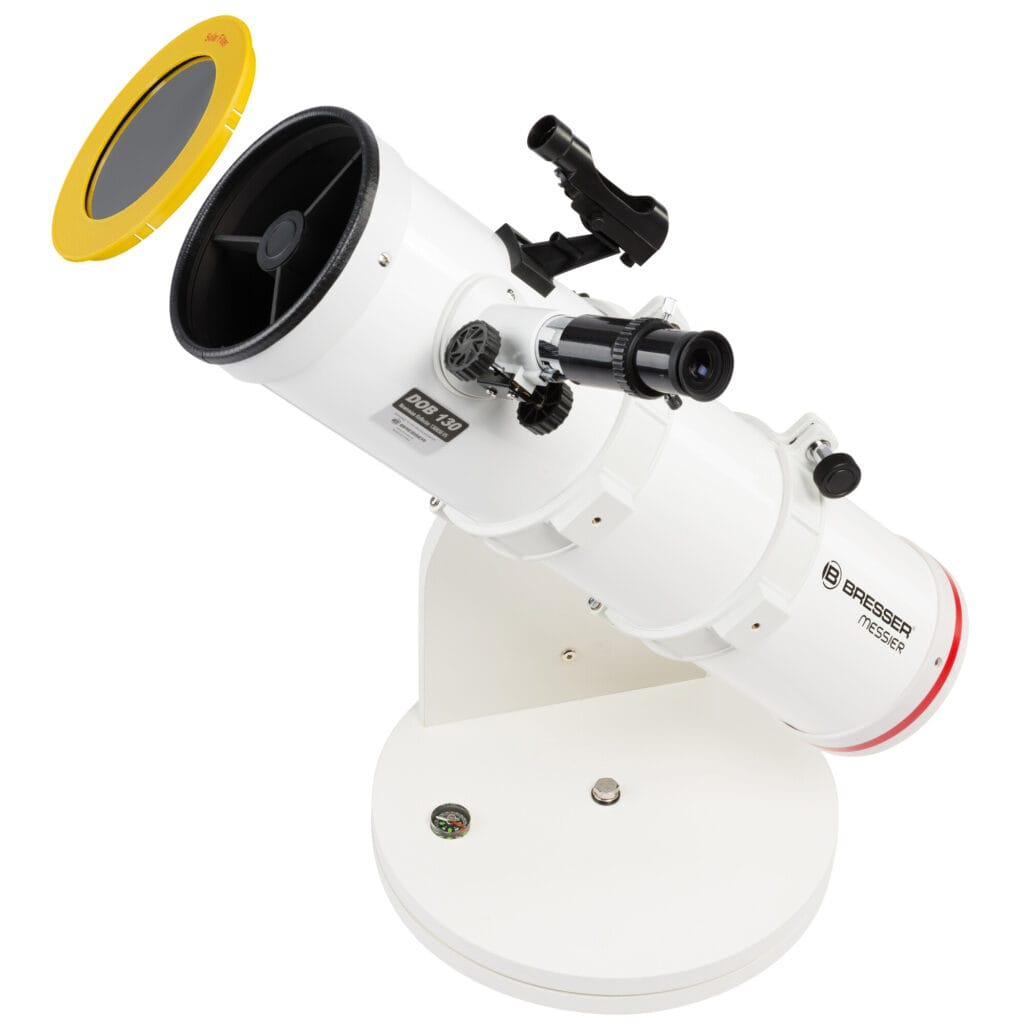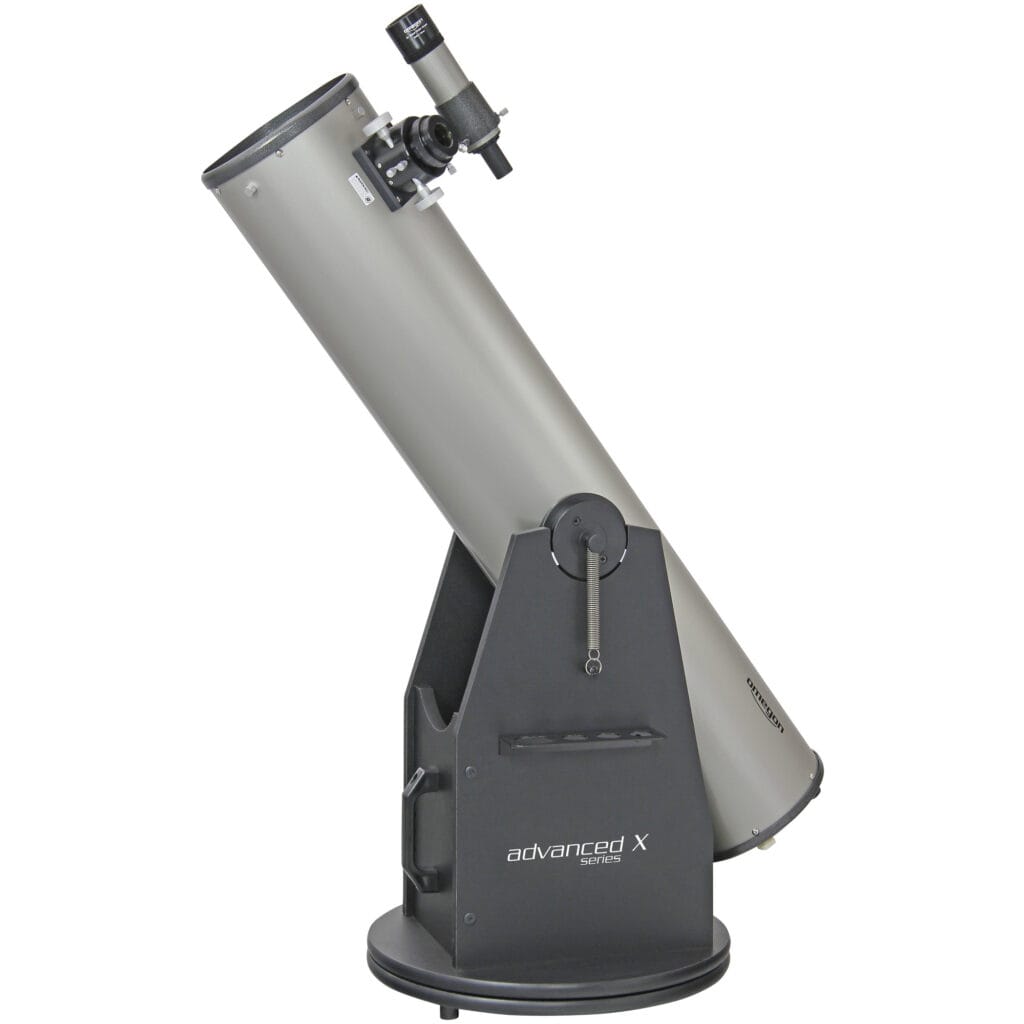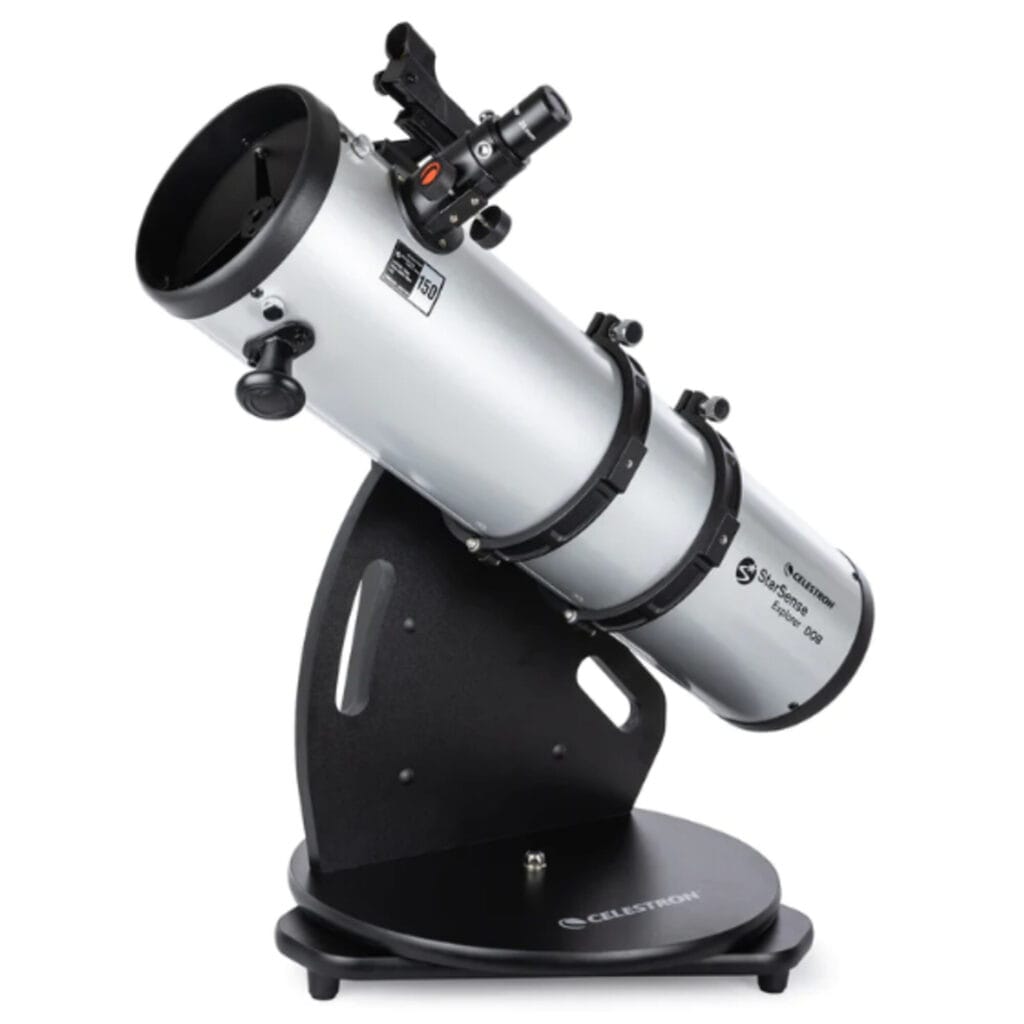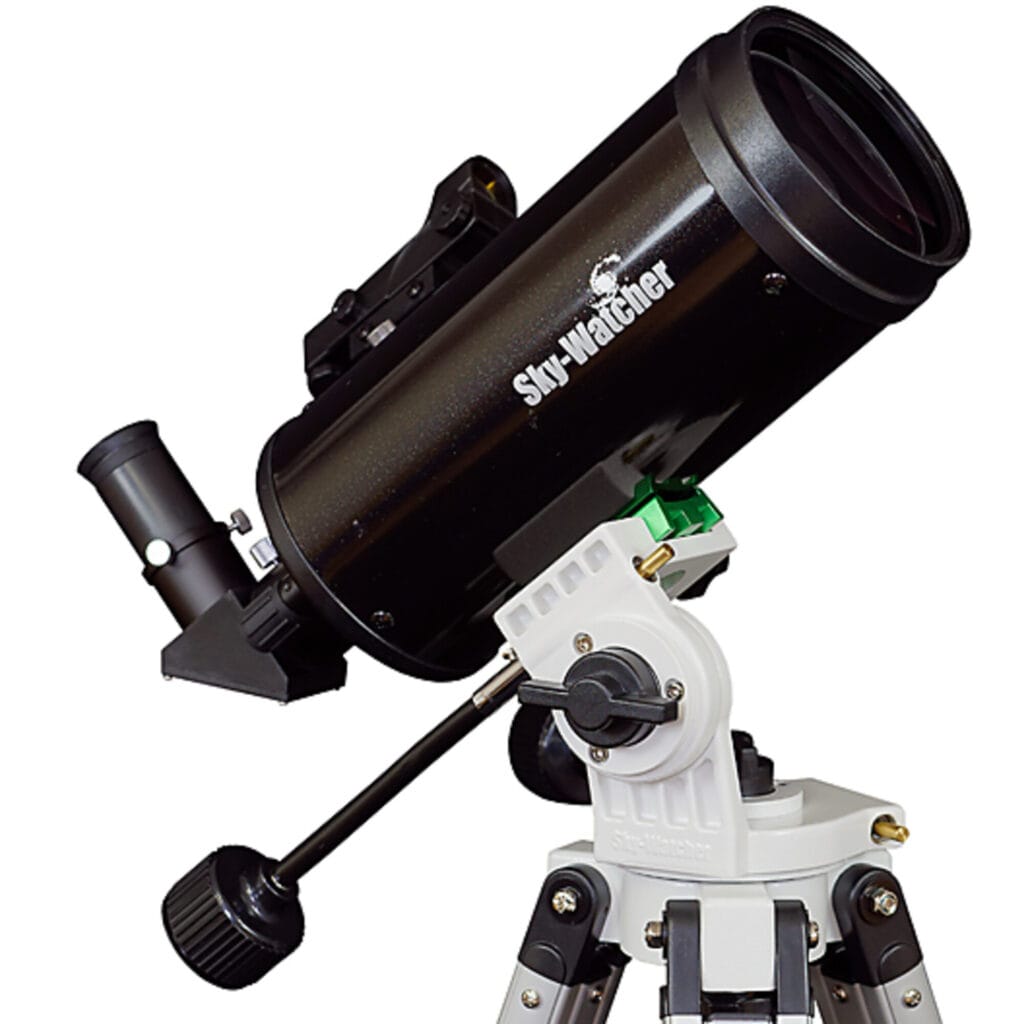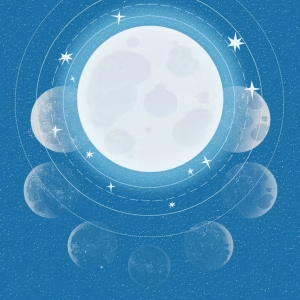A good telescope for beginners helps you discover the moon, planets and bright deep-sky objects without frustration. Yet many people buy the wrong model: too complicated, too dim, or just way too big. In this blog you will learn which telescopes are good for beginners, how exactly magnification works, and which mistakes are best to avoid.
Telescopes are often all about magnification. But how exactly does that work?
Each telescope has a so-called focal length - this is the distance the light travels in the tube before it is focused. At the end you place a eyepiece, which acts as a magnifying glass for the image captured by the telescope. You calculate the magnification as follows:
Magnification = focal length telescope ÷ focal length eyepiece
An example: suppose your telescope has a focal length of 650 mm and you use a 25 mm eyepiece. Then the magnification is:
650 ÷ 25 = 26x magnification
If you use a 10 mm eyepiece, you get:
650 ÷ 10 = 65x magnification
What is the maximum magnification a telescope can handle?
While it sounds tempting to “zoom in as far as you can,” there is a limit to what a telescope can handle. A handy rule of thumb is:
Maximum useful magnification ≈ 2x the lens or mirror aperture in millimeters
If you have a telescope with a 130mm mirror (you can read this from the first number. If it says 130/650, then the aperture is 130mm), then the maximum usable magnification is about 260x. Anything above that usually produces a dark or blurry image - especially with cheap eyepieces or under poor viewing conditions.
Moreover, the atmosphere itself is often the limiting factor. Turbulence in the air (also called seeing mentioned) makes high magnifications virtually useless on many nights.
For beginners, a magnification between 25x and 100x most useful in practice. With this you can already see beautiful details on the moon, the rings of Saturn, the cloud bands of Jupiter and some nebulae in good conditions.
The best telescope for beginners: our top 6
The question “what is the best telescope for beginners” does not have one answer. It depends on what you want to see and how you want to look. Dobsonians are ideal for those who want as much image as possible for their money and are not deterred by a larger mirror tube. Telescopes on tripods are handier, lighter and easier to aim at specific celestial bodies such as the moon and planets. Below you can read which models have proven themselves in both categories.
Dobsonians: maximum light output for your budget
Dobsonians are mirror telescopes that stand on a simple, stable swivel base. They are designed to capture a lot of light without complicated mechanics. As a result, they offer the best image quality per dollar. If you like to see the Orion Nebula, the Andromeda Galaxy or the rings of Saturn with your own eyes, a Dobson is always right for you.
The Bresser Dobson N 130/650 Messier is the best-known compact variant. With a 130-millimeter mirror, it captures a surprising amount of light and delivers sharp images of the moon, Jupiter and the brightest nebulae. It takes up little space and is ready to use in minutes.
There are also larger variants of this model, so choose the biggest one that fits within your budget.
Those who want to see just a little more, opt for the Omegon Dobson N 203/1200. It captures about a third more light than the 130 millimeter, making fainter nebulae and star clusters stand out better. The solid base makes object tracking smooth and intuitive.
The Celestron StarSense Explorer Dobson 150/750 is the perfect step between the compact 130 mm models and the larger 200 mm Dobsons. With its 150 millimeter mirror, it captures noticeably more light, resulting in sharper planetary details and more visible nebulae under dark skies.
The telescope uses the StarSense system, where you place your smartphone in the mount and see exactly where the telescope is pointing through the app. Your phone's camera determines the position and guides you with arrows to the chosen object. This way you can find the moon, Jupiter or the Orion Nebula without experience, even if you don't know where to start.
Its compact Dobson base keeps it stable but easy to move around. The short focal length provides a bright, high-contrast image, ideal for both planets and deep-sky objects. This makes this telescope the ideal middle ground: bright, user-friendly and modern, without compromising on optical performance.
The best telescopes on tripod
Telescopes on tripods are intended for those who want to take the telescope with them more often or simply prefer a telescope on a tripod. They are more compact than Dobsons, take up less space (are also lighter) and are ideal for observations of the moon and planets. You can also expand into astro-photography should you wish to do so.
The Omegon 102/660 is a lens telescope with an objective lens of 102 millimeters and a focal length of 660 millimeters. That means you get a wide field of view in which the moon fits completely and in which Jupiter's Galilean moons are clearly visible. Thanks to the short focal length, the image is bright and contrast is well maintained at medium magnifications. The azimuthal mount moves smoothly in elevation and direction, so tracking celestial objects feels intuitive. This telescope is particularly suitable for beginners who want to observe mainly the moon, Jupiter, Saturn and open star clusters.
The Celestron StarSense Explorer LT 114AZ combines classic Newton optics with modern technology. Using the StarSense app and the smartphone mount on the telescope, you use your phone's camera to determine exactly where the scope is pointing. The app then shows which objects can come into view and guides you step by step to the target. Thus, without experience you can find the Orion Nebula, Jupiter or the moon within minutes. The 114 millimeter mirror provides enough light output to show bright objects even under urban sky conditions. With the lightweight aluminum tripod and easy operation, this is an ideal first telescope for those who prefer observing to searching.
The Sky-Watcher Skymax 102 is a compact Maksutov-Cassegrain with a long focal length of 1300 millimeters. That combination makes it particularly suitable for detailed observations of planets and the moon. Whereas refractors and Newtons give a wide field of view, the Skymax actually zooms in further. Craters, shadow boundaries and the Cassini line in Saturn's rings become visible in stable air. The closed tube prevents dust and ensures consistent imaging behavior, even with temperature variations. The version with AZ-GTe mount can be controlled wirelessly via smartphone or tablet, making the tracking of celestial objects fully automatic.
Which telescope suits you?
Whether you choose the luminosity of a Dobson or the precision of a tripod telescope, the most important thing is that the telescope suits your way of viewing. Those who mainly want to observe the moon, Jupiter and Saturn will find great pleasure in a compact refractor or a smart StarSense telescope. Those who want to go further into the universe will have access to nebulae, star clusters and even faint galaxies with a larger Dobson.
We always recommend thinking first about where you want to look: in the garden, on a balcony or during a weekend under dark skies. Conditions often determine more than the telescope itself.
Want to experience it first before you decide? At Telescoop.co.uk you can find several telescopes for hire, including compact refractors and Dobsonians. This way you can discover in one evening which type suits you, without making a large investment right away. If you like it, you can use the rental amount later as a discount on your purchase.
Whatever choice you make, the most important thing is to just get started! In the end, one learns by doing....


